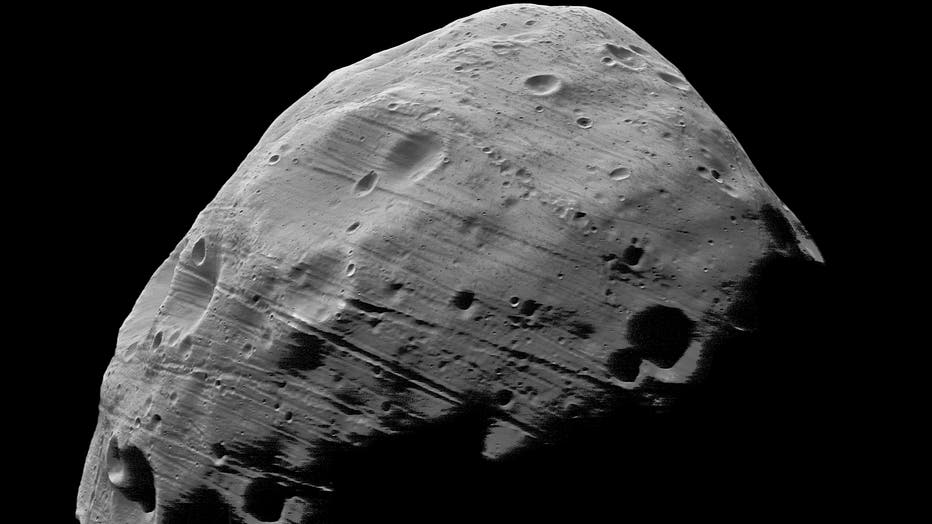Watch: NASA’s Perseverance captures clearest, closest video to date of solar eclipse on Mars
Captivating new video from NASA’s Perseverance Rover shows the clearest, closest images yet of a solar eclipse on Mars.
The video shared by NASA captured Phobos, Mars’ potato-shaped moon, crossing the face of the sun for an eclipse that lasted just over 40 seconds. A solar filter reduced light intensity, giving scientists a chance to see more details in the shape of Phobos’ shadow, "like ridges and bumps on the moon’s landscape."
"You can also see sunspots," said Mark Lemmon, a planetary astronomer with the Space Science Institute in Colorado. "And it’s cool that you can see this eclipse exactly as the rover saw it from Mars."
RELATED: NASA's Perseverance rover beams back first images, audio recordings from Mars
Perseverance filmed the video on its 397th day of the Mars mission, which hopes to find signs of ancient life. Scientists believe that if life ever flourished on Mars, it would have happened 3 billion to 4 billion years ago, when water still flowed on the planet.
The rover’s arm drills down and collects rock samples containing possible signs of bygone microscopic life. Three to four dozen chalk-size samples will be sealed in tubes and set aside to be retrieved eventually by another rover and brought homeward by another rocket ship.
The goal is to get them back to Earth as early as 2031.
Perseverance is the ninth U.S. spacecraft since the 1970s to successfully land on Mars.
RELATED: NASA's Perseverance rover sends back first HD Mars panorama
"I knew it was going to be good, but I didn’t expect it to be this amazing," said Rachel Howson of Malin Space Science Systems in San Diego. "It feels like a birthday or holiday when they arrive. You know what’s coming, but there is still an element of surprise when you get to see the final product."
Phobos ‘doomed’

IN SAPCE, JULY 23: This handout image from ESA/NASA shows the highest-resolution full-disc image yet of the surface of the moon Phobos.(Photo by NASA/ESA via Getty Images)
NASA scientists are sure that Phobos is slowly moving closer to the Martian surface, "destined to crash into the planet in tens of millions of years."
The more they learn about eclipses on Mars, the more they learn about the moon’s "slow death spiral." On Earth, NASA scientists use solar eclipses to study the sun's corona.
RELATED: Total solar eclipse 2024: next eclipse to stretch from Mexico to Maine
Phobos is 157 times smaller than Earth’s moon. Deimos, Mars’ other moon, is even smaller, according to NASA.
The Associated Press contributed to this report.

